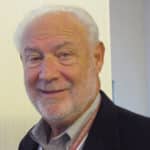
Lew Sichelman
Water might not be on many homebuyers’ radar screens. But it sure is becoming a more important feature, both inside and outside the house.
At both the recent International Builders’ Show in Las Vegas and the Consumer Electronics Show, a number of water-related products drew more than passing attention. And a report from one of the housing industry’s top advisory firms found that 90 percent of the top-selling master-planned communities in the country include a “significant” water amenity.
Not only that, but in working on her year-end summary of the top MPCs, John Burns Real Estate Consulting’s research manager Devyn Bachman found what she calls some “amazing water-inspired” features.
Master-Planned Features
Crystal Lagoons tops the list. Bachman called them “easily the most discussed major master-planned community amenity in the last decade.”
These man-made bodies of water use far fewer chemicals and less energy than conventional swimming pools and can be dozens of acres in size. They’re all over the world, with 17 now planned, under construction or in operation in the U.S.
If one large body of water is good, then several mini-bodies are better – at least, that’s what GL Homes in Florida discovered. After years of putting lakes of up to 35 acres in its communities, the builder switched to several smaller lakes of 8.5 acres or less, thereby generating more water-view lots and greater lot premiums.
At The Woodlands, outside Houston, the developer built and stocked 44 fishing ponds, most of which operate on a catch-and-release basis. And in California, Rancho Mission Viejo added age-restricted swimming pools for residents who don’t want to live in an age-restricted community, but don’t want to splash around with a bunch of kids, either.
Lazy rivers are standard now at water parks, but the one at Sunfield near Austin, Texas, goes one better. A meandering 1,000-foot-long stream carries residents through their entire amenity center: from the volleyball and basketball courts, under or around several waterfalls and into the lagoon-like pool.
And how many properties can claim their own canoe and kayak launch? Riverwalk in Rock Hill, South Carolina, not only features a launch into the calm waters of the Catawba River, but also offers courses for paddlers of any age.
On a smaller scale, for buyers who don’t want to share in the expense of maintaining a big pool complex, The Groves, near Houston, Texas, offers a splash pad, “where a kid can be a kid, no matter their age.” There’s also a stocked pond for catch-and-release fishing.
Advisory firm RCLCO ranked the top-selling MPCs, and found that Nocatee, near Jacksonville, Florida – the fourth-best-seller of the decade – has a 4-story above-ground interactive spray playground, similar to those found at water parks. In the wading pools, water can bubble, squirt and rain down while poolgoers wade, swim, slide or play.
“It takes an innovative and strategic mindset to stay a step ahead of the competition,” says RCLCO’s Brad Hunter. “Differentiation of amenities is one way that successful developers are doing that.”
New Gadgets for Homeowners
Meanwhile, nothing water-related makes any of the numerous buyer-preference surveys, even when the question involves conserving energy or resources. But that hasn’t stopped manufacturers from coming forward with products that could one day be included in model homes.
One such product, LeakSmart, was named one of nine “Green Innovations of the Year” by Green Builder magazine. It not only detects a leak somewhere in a home’s plumbing system, a sensor sounds an alarm and shuts down the main water supply.
Unnecessary? Think again. According to one source, the typical homeowner is 10 times more likely to incur damage from a water leak than a fire. About 40 percent of damaging leaks occur inside the walls, and another 40 percent from appliances. And the damage can be costly: almost $10,000 per incident.
Two other neat products can save on the municipal water grid by taking drinkable water right out of the air. Using heat-exchange technology, units by Watergen deliver safe, fresh H20. Large Watergen units can be installed on rooftops, and smaller ones go in the kitchen. A similar product, Zero Mass, needs only sunlight and air to make drinking water. And since the average family uses 20 liters of water daily for drinking, and 300 to 500 liters more for household uses like bathing, dishwashing and clothes-washing, every little bit helps.
Then there’s OxiCool, a clean-technology air-conditioning system that uses pure water as the only refrigerant. Opt for this, and you’ll eliminate the need for electricity, toxic gases and high pressure to air-condition your house.
Another innovator, NRCR, exhibited a condensing tankless water heater that recirculates the water until it is needed – thus eliminating waste and keeping the hot stuff closer to the outlet, where it is delivered on demand. And Nano, a high-efficiency toilet from Niagara, offers flush options using as little as 0.5 gallons of water.
Other plumbing innovations: American Standard exhibited a kitchen faucet with a dial that can measure and dispense an exact amount of water, from half a cup to 5 cups, eliminating guesswork and waste while cooking. And Voltea has a softening filtration system that provides purified water to every faucet in the house without the use of salt or chemicals.
Lew Sichelman has been covering real estate for more than 50 years. He is a regular contributor to numerous shelter magazines and housing and housing-finance industry publications. Readers can contact him at lsichelman@aol.com.






